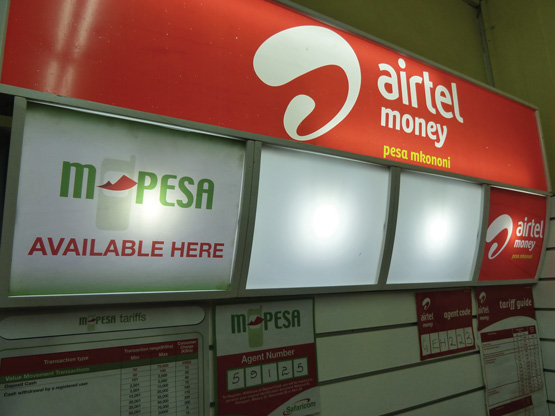Africa is undoubtedly leading the way in mobile banking. With all the right ingredients for a popular and successful banking on-the-go eco-system to develop, mobile banking has grown from strength to strength in many African countries.
However, when it comes to ewallet services, Kenya’s M-PESA is an unprecedented success story and a perfect model of cellphone operators offering banking services to previously unbanked customers in the form of e-wallets as well as person-to-person money transfers. Previously African customers who had no access to a bank would have had to paid in cash, they can now receive and transfer money more securely via their cellphones.
This is how it works: Account holders buy electronic funds at an M-PESA agent and send the electronic value to any other mobile phone user in the country, who can then redeem it for conventional cash at any nearby M-PESA agent. From the initial ‘send money home’ service, M-PESA has expanded to include airtime top-up, bill payments, salary payments, M-KESHO banking services (which allow customers to earn interest) and more recently international money transfer in partnership with Western Union.

Africa has one of the highest numer of unbanked, or underbanked people – which makes mobile banking a necessity rather than a luxury. A recent report estimated that 3.5 billion people around the world do not have access to traditional financial services. As a result, mobile phone banking was the inevitable solution for extending banking services to the unbanked people of rural Africa
By clicking a few keys on a mobile phone, money can be zapped from one part of Kenya to another in seconds. For urban migrants sending money home to their villages, and for people used to queuing at banks for hours to pay bills or school fees, the M-PESA money-transfer service, operated by Safaricom, Kenya’s largest mobile operator, is a godsend. No wonder it is used by 9.5m people, or 23% of the population, and transfers the equivalent of 11% of Kenya’s GDP each year; or that it has inspired more than 60 similar schemes across the world.
M-Pesa has spread quickly, and has become the most successful mobile phone based financial service in the developing world. By 2012, a stock of about 17 million M-Pesa accounts had been registered in Kenya.Over 800 organisations accept payment via M-PESA. Under the auspices of Safaricom’s parent company, Vodafone, M-PESA has been exported to Afganistan and Fiji.
With the African mobile banking market set to grow to $25 billion by 2020, banks and mobile operators are now scrambling to own the relationship with the mobile phone users in Africa. Undoubtedly, Africa has all the ingredients that make this business model a resounding success.
Firstly, the sales of mobile phone handsets is one of the highest in the world, across all levels of African societires. According to recent reports, there were no more than two million mobile phones users in Africa in 1998. This number grew to more than 600 million by 2014.
Secondly, Africa has one of the highest numer of unbanked, or underbanked people – which makes mobile banking a necessity rather than a luxury. A recent report estimated that 3.5 billion people around the world do not have access to traditional financial services.
Third, much of Africa’s population lives in remote rural locations, with no banking services. On the other hand, the rising number of urban workforce needs to send money to dependents living in these remote rural areas. As a result, mobile phone banking was the inevitable solution for extending banking services to the unbanked people of rural Africa.















